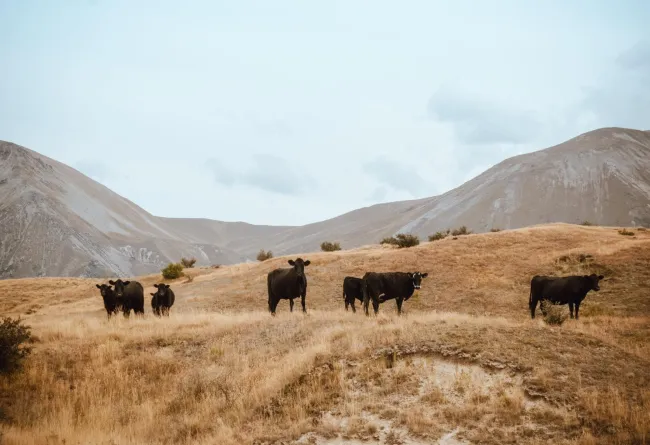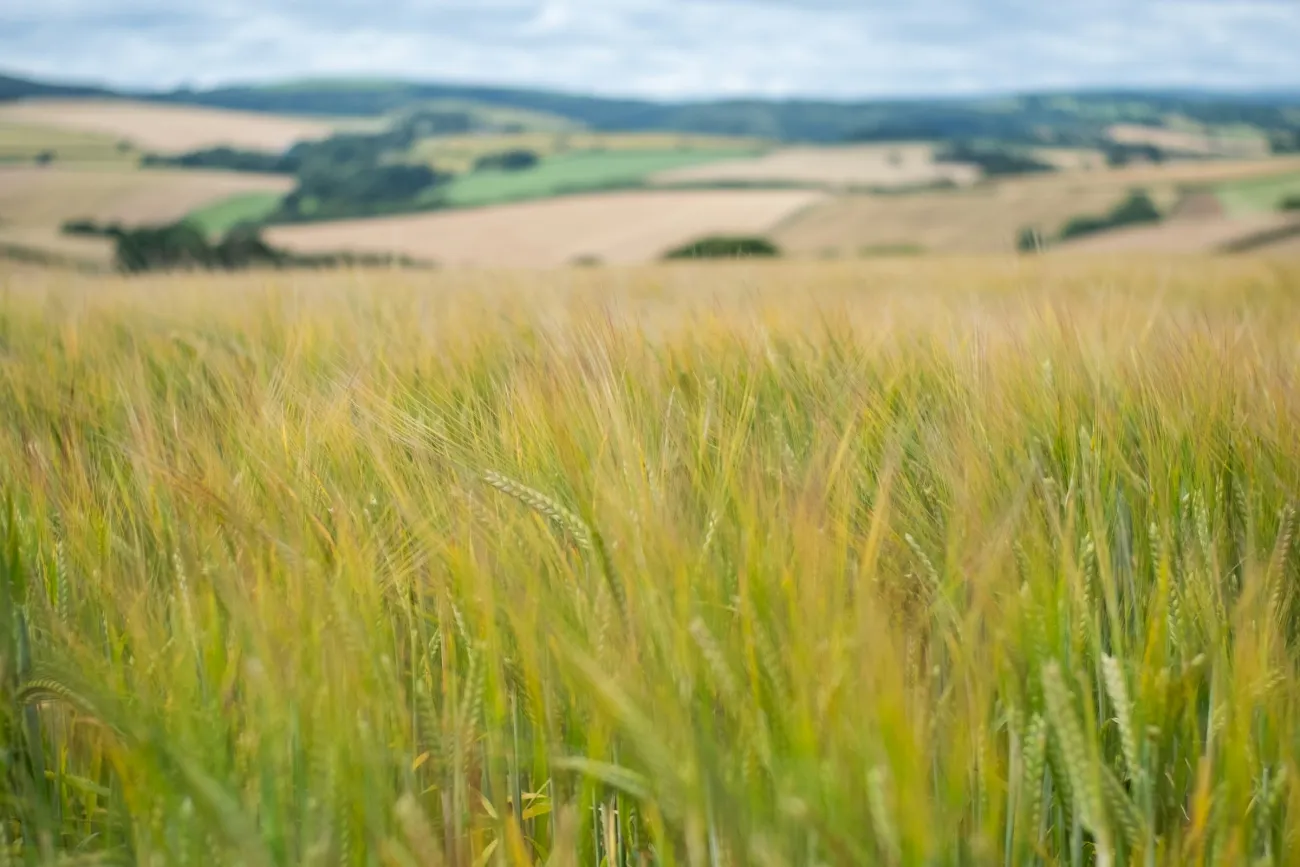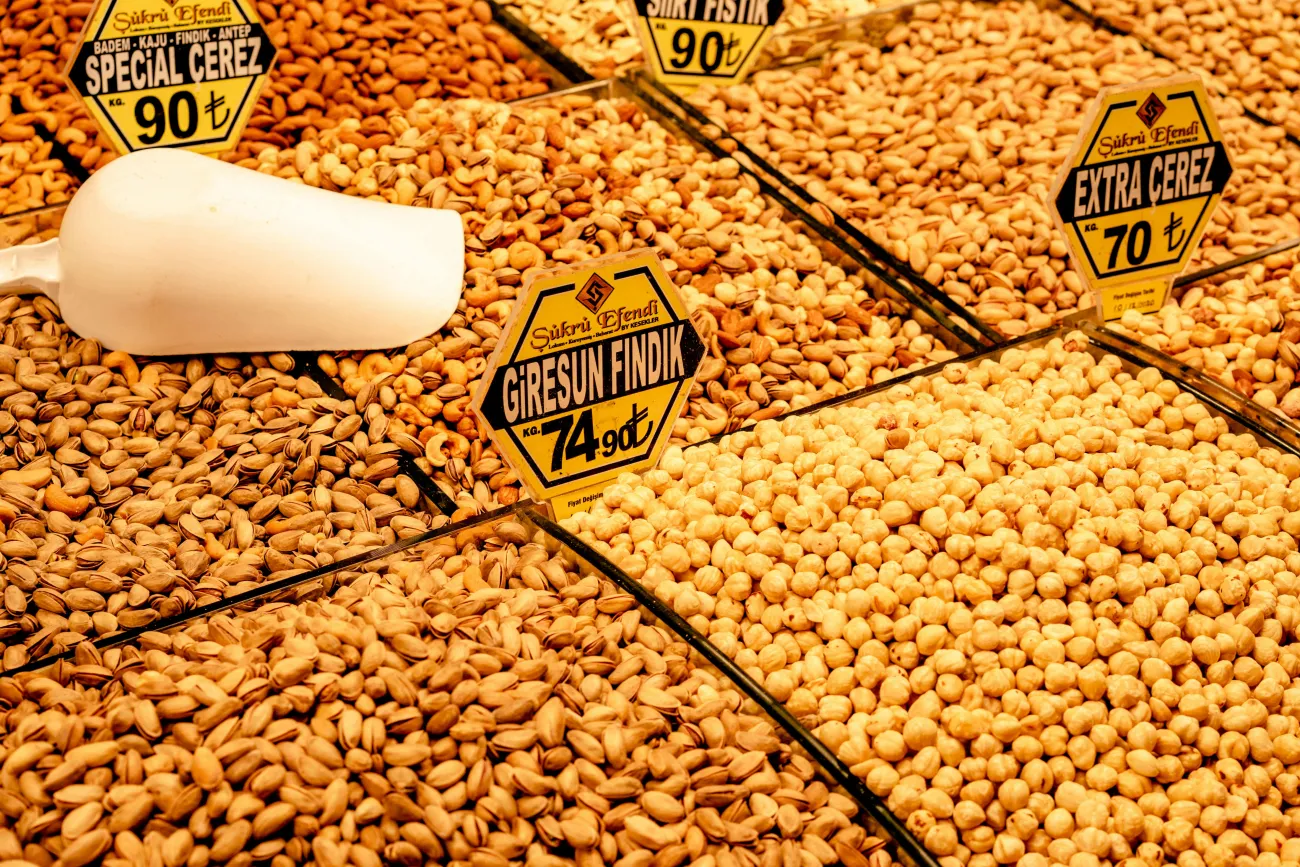This paper examines how localised the US food system could become by calculating theoretical minimum foodshed sizes (i.e. average distance travelled by food) for 378 urban areas under seven different dietary scenarios. It finds that (on average) foodsheds can be smaller for the low-meat diets compared to high-meat diets.

The seven scenarios are:
- US baseline (current average US consumption)
- Positive control (similar to the US baseline but without excess calories from added sweeteners and fats)
- 80% omnivorous
- 50% omnivorous
- 20% omnivorous
- Ovo-lacto vegetarian
- Vegan
As shown in the figure below, the vegan diet uses the least land overall and the US baseline uses the most. The vegan diet uses less cultivated cropland than the baseline, positive control and 80% omnivorous diets, but more than the 50% and 20% omnivorous diets and the ovo-lacto vegetarian diet.
Image: Figure 2, Kurtz et al. Average weighted adjusted footprint, by diet type. Annual per capita land requirements by diet scenario and agricultural land type.
The theoretical minimum foodshed size is calculated for 378 urban areas by allocating food produced to the nearest urban area while meeting food consumption requirements for all areas. The figure below shows the results by type of farmland (cultivated cropland, perennial cropland and grazing land).
Image: National average US foodshed size by farmland type. Data from Table 2 of Kurtz et al. Figure by the FCRN.
The results show that food from cropland can be (on average) sourced more locally in the low-meat diets (ovo-lacto vegetarian, 20% and 50% omnivorous, and vegan) compared to the high-meat diets.
Food from grazing land has to travel significantly further in the baseline and positive control cases compared to the 20% omnivorous diet (note that grazing land is assumed to not be used in the ovo-lacto vegetarian and vegan diets).
See also the FCRN summaries of the papers Carrying capacity of US agricultural land: Ten diet scenarios and Local food crop production can fulfil demand for less than one-third of the population.
Abstract
In the long term, food systems must heed natural resource limits. Localised production and dietary changes are often suggested as potential solutions. However, no U.S. analyses fully evaluate the feasibility to scale localisation across a range of diets. We therefore modelled the biophysical capacity for regional food systems based on agricultural land area and productivity, population, and 7 diet scenarios ranging in meat-intensity, from current consumption to vegan. We estimated foodshed size, colloquially known as “food miles” for 378 U.S. metropolitan centers, in a hypothetical nationwide closed system that prioritises localised food. We found that foodshed size (weighted average distance travelled) for three land types ranged from 351–428 km (cultivated cropland), 80–492 km (perennial forage cropland), and 117–799 km (grazing land). Localised potential varies regionally: foodsheds are generally larger in the populous Northeast, Southeast, and Southwest than in the Northwest and the centre of the country. However, depending on consumption of animal-based foods, a sizable proportion of the population could meet its food needs within 250km: from 35%–53% (cultivated cropland), 39%–94% (perennial forage cropland, 100% for vegan), and 26%–88% (grazing land, 100% for ovolacto-vegetarian and vegan). All seven scenarios leave some land unused. This reserve capacity might be used to supply food to the global market, grow bioenergy crops, or for conservation.
Reference
Kurtz, J.E., Woodbury, P.B., Ahmed, Z.U. and Peters, C.J., 2020. Mapping US Food System Localisation Potential: The Impact of Diet on Foodsheds. Environmental Science & Technology, Published online.
Read the full paper here. See also the Foodsource resource Food systems and greenhouse gas emissions.




Comments (0)